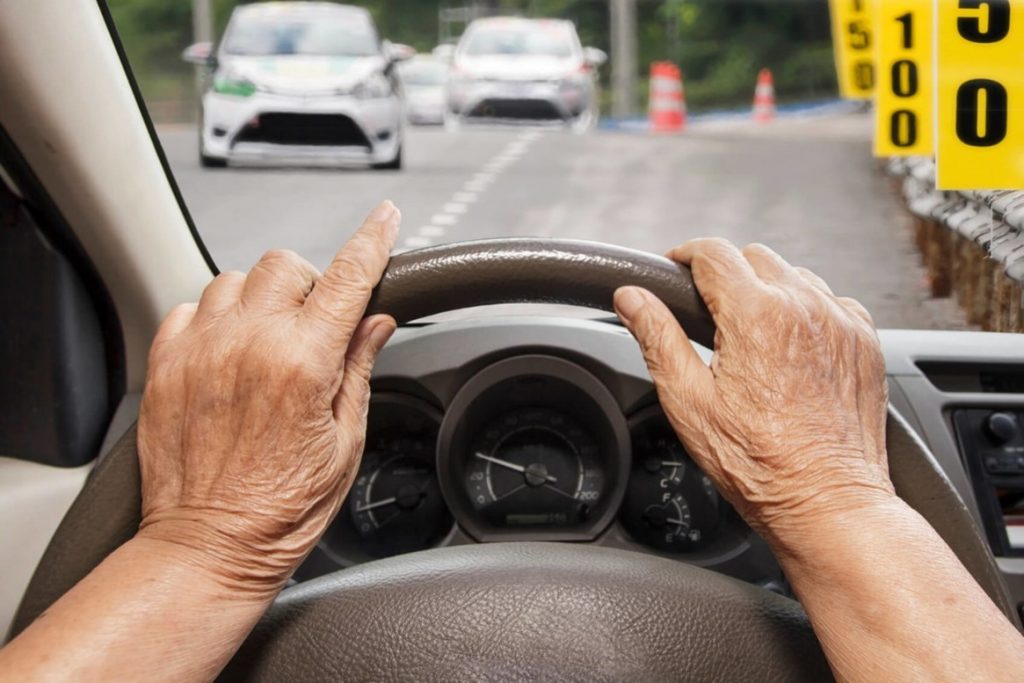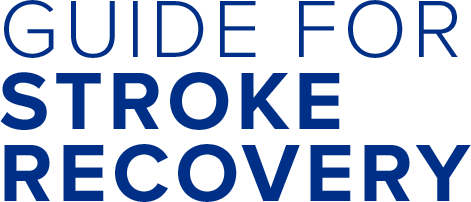Being able to drive again is important for many people after a stroke. This is possible and about half of people who have had a stroke return to driving.
Your doctor or stroke specialist will decide if, and when, it is safe for you to drive. This will depend on the effects of your stroke and how long they last.
How does a stroke change my ability to drive safely?

A stroke can affect key driving skills such as:
- Attention
- Memory
- Judgment
- Insight
- Reaction time
- Sight
- Range of motion
- Strength
- Coordination
- Hearing
- Control over emotions
Sometimes there are lasting effects of the stroke that make driving unsafe. When this happens, returning to driving may not be possible. Making arrangements with family or friends, or considering alternatives such as Wheel-Trans or volunteer driving services may be options.
Why did my driver’s licence get suspended?
This is for your safety. Your doctor is required by law to tell the Ministry of Transportation of Ontario (MTO) about your stroke. The MTO may suspend your driver’s licence until it is safe for you to drive again.
Watch this video about driving after stroke to learn more:
Video credit: National Highway Traffic Safety Administration
How do I get my licence back?
The MTO will send you a letter telling you what to do to get your licence back.
They may need:
- A doctor’s report
- Report from other specialists (for example, neurologist, ophthalmologist)
These reports must show that you have healed enough to drive safely. The MTO will review these reports and send you a letter with a decision. This may take several months. If you do not agree with the decision, you can appeal.
Where can I get training to help me drive safely after a stroke?
You may want to reach out to a driving rehabilitation centre that provides a range of services including completing assessments that are done to decide if you are medically fit to drive, and training for adaptive driving controls and driver reintegration. Examples of Ontario Ministry of Transportation approved driving rehabilitation centres include:
Visit the MTO website to see a list of approved assessment centres. You can sign up for driving training at these centres. You will need to pay for this service.
Watch this video to learn more about driving training after stroke:
Video credit: National Highway Traffic Safety Administration
Where do I go for a driving test after stroke?
Visit the MTO website to see a list of approved assessment centres.
Will I need to make changes to my car to drive safely?
Some people are able to drive even if they have physical changes after a stroke. You may need to make some changes to your car so you can drive. Visit an approved driving assessment centre. Ask for an assessment from one of their experts. They will tell you what adapted driving equipment you need.
Examples of changes to your car include:
- Special hand controls
- Special steering knob
- Left foot accelerator
Who can make changes to my vehicle?
Only qualified individuals should make changes to your vehicle. Speak to your assessor for a list of companies that adapt cars for people with disabilities.
Can I get funding to help pay for changes to my vehicle?
March of Dimes Canada’s Home & Vehicle Modification Program
This program helps people living in Ontario pay for basic car adjustments. There is a set amount of funding for this program. Learn more on the March of Dimes website.
Canada Revenue Agency (CRA)
There are tax credits or tax deductions for people with disabilities and their families. You can submit your receipts with your next tax return. Learn more about tax credits on the CRA website.
I cannot drive safely right now. What other options do I have?
Here are some options you can try instead of driving:
- Asking family and friends for a ride
- Wheel-Trans. This program provides door-to-door accessible public transit service to people with disabilities. Learn more about this program on the TTC website or by calling Wheel-Trans: 416-393-4111.
- Volunteer driving services. Provides assisted door-to-door transportation services to seniors and adults with disabilities for a small fee.
How can I get an accessible parking permit?
You can apply for an accessible parking permit on the Service Ontario website. You and your healthcare team will need to fill out the forms together. Service Ontario Toll-free: 1-800-387-3445.
Having read the information in this section, consider the following
- Is driving something that is important for me to get back to doing?
- Do I know what steps to take to get my licence back?
- Has the doctor (neurologist, physiatrist) given me the OK to drive again?
- Do I need to have a driving test?
- Do I know where to go for this test?
- Do I know how much the test costs?
- Have I spoken with a driver rehab specialist about making changes to my vehicle?
- Can I apply for funding to help cover the cost of these changes?
- Have I told my auto insurance company about any changes (for example, license or vehicle modification)?
- Do I know whether my insurance covers someone else to drive my car?
- Do I know what transportation options are available if I am no longer allowed to drive (for example, Wheel-Trans or volunteer driving services)?
Where to get more information, help and support:
Toronto Rehabilitation Brochure
Toronto Ride – 416-481-5250
Wheel Trans – 416-393-4111
Service Ontario – Accessible parking permit
Toll-free: 1-800-387-3445
Driver Improvement Office, Medical Review Section
Call toll free 1-800-268-1481 or 416-235-1773 (Toronto)
Approved driver assessment and training centres
Driving After a Stroke in Ontario, Booklet by the Southwestern Ontario Stroke Network Arabic, Dutch, English French, German, Greek, Italian, Portuguese and Spanish.
Driving After a TIA in Ontario, Booklet by the Southwestern Ontario Stroke Network Arabic, Dutch, English, French, German, Greek, Italian, Portuguese and Spanish
